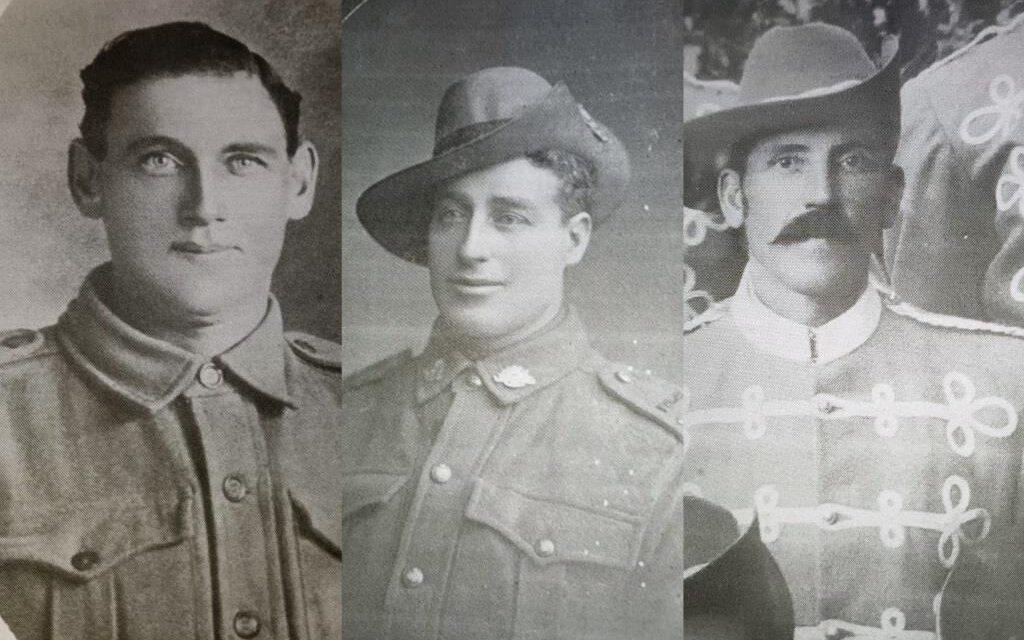Over the past 109 years, Australians have become accustomed to seeing long lists of names on the ubiquitous war memorials in every city and town in Australia. Sadly, we rarely take the time these days to become aware of the stories behind those names – names of those thousands of Australians who never returned from wars in far-flung countries.
The Wombat Post, from the beginning, has used both Anzac Day and Remembrance Day to tell their stories of This Anzac Day, we have taken the opportunity to look into the stories behind two names on the Daylesford cenotaph – chosen because they both have the same surname.
The men whose stories we researched were on the memorial as Tatti F. and Tatti S.
Frank Tatti
Frank Tatti was born in 1894. He was living with his mother Mary Ann Tatti in Kidd’s Gully, Daylesford when he enlisted on 12 April 1916.
He was 5 feet 7 inches tall, had grey eyes and brown hair. He had earlier been rejected for military service because he was missing a finger (probably as a result of his occupation as a miner).
Frank left Australia from Melbourne aboard the ship HMAT Thermistocles bound for Europe on 28 July 1916.
Frank was killed in action in Belgium on 20 September 1917. His name is also recorded on the Menin Gate Memorial, Ypres, Belgium.
Sebastian Tatti
Sebastian (“Relli”) Tatti was Frank Tatti’s uncle. He was born in 1883 and identified Frank’s mother as his next of kin.
He was 5 feet 9½ inches tall, had blue eyes and black hair. Sebastian embarked from Fremantle on 2 November 1914 aboard the HMAT MedicA7.
Relli Tatti was hospitalized for a period while at Gallipoli when he suffered a gunshot wound to his ear. He was later further hospitalized with influenza.
After surviving Gallipoli, Sebastian was killed in action in France on 27 March 1917. He was buried at Vaulx Hill Cemetery, Vaulx, Picardy, France.
And a survivor: Harry Tatti
As a further blow to the Tatti family, adding to the unimaginable grief of Mary Ann Tatti, Henry (Harry) Tatti, brother to Frank and nephew of Sebastian, was also a victim of WW1.
His name does not appear on the Memorial because he survived and returned to Australia. But his story is just as harrowing!
Henry (Harry) Tatti, Frank’s older brother, was born in 1892, lived with their mother Mary Ann Tatti in Daylesford. He gave up his employment as a miner to enlist on 15 July, 1915. He had been a staunch member of the Amalgamated Miners Borough Band.
He was discharged from the AIF for a short period during his enlistment training in Seymour due to the death of his father. Harry was the eldest of four brothers, the youngest being 4 years old at the time.
He was 5 ft 8 inches tall, had blue eyes and brown hair. He left Melbourne for Europe aboard the HMAT CommonwealthA73 on 26 November 1915.
Harry was wounded in action at Pozières in France. During a raid on the German trenches he was wounded in the arm. He was awarded the Military Medal for his work in this action and was promoted to Lance Corporal.
In a following raid, Harry was wounded in the left leg a few inches below the knee by an exploding German bomb. As he crawled back to the Australian trenches he suffered further severe injuries to his body from German shrapnel.
For a long time, his life hung in the balance. His left leg was amputated. After a time in hospital in England, he was repatriated to Australia on 12 February 1917.
The Stories
These stories profoundly illustrate the horrors of war for one Daylesford family. All of the names inscribed on our memorial have similar stories behind them. Taken together, they serve as a stark reminder of the impact of war on our community, and in the broader context, on our nation.
At the going down of the sun, and in the morning,
We will remember them.
The stories of these men and those of all of the men lost to Daylesford in WW 1 can be found in a comprehensive publication Discovering Daylesford State School’s ANZACs 2nd ed. 2016. It can be accessed through the school’s website https://daylesps.vic.edu.au/ or in the library of the Daylesford Museum https://daylesfordmuseum.net/





